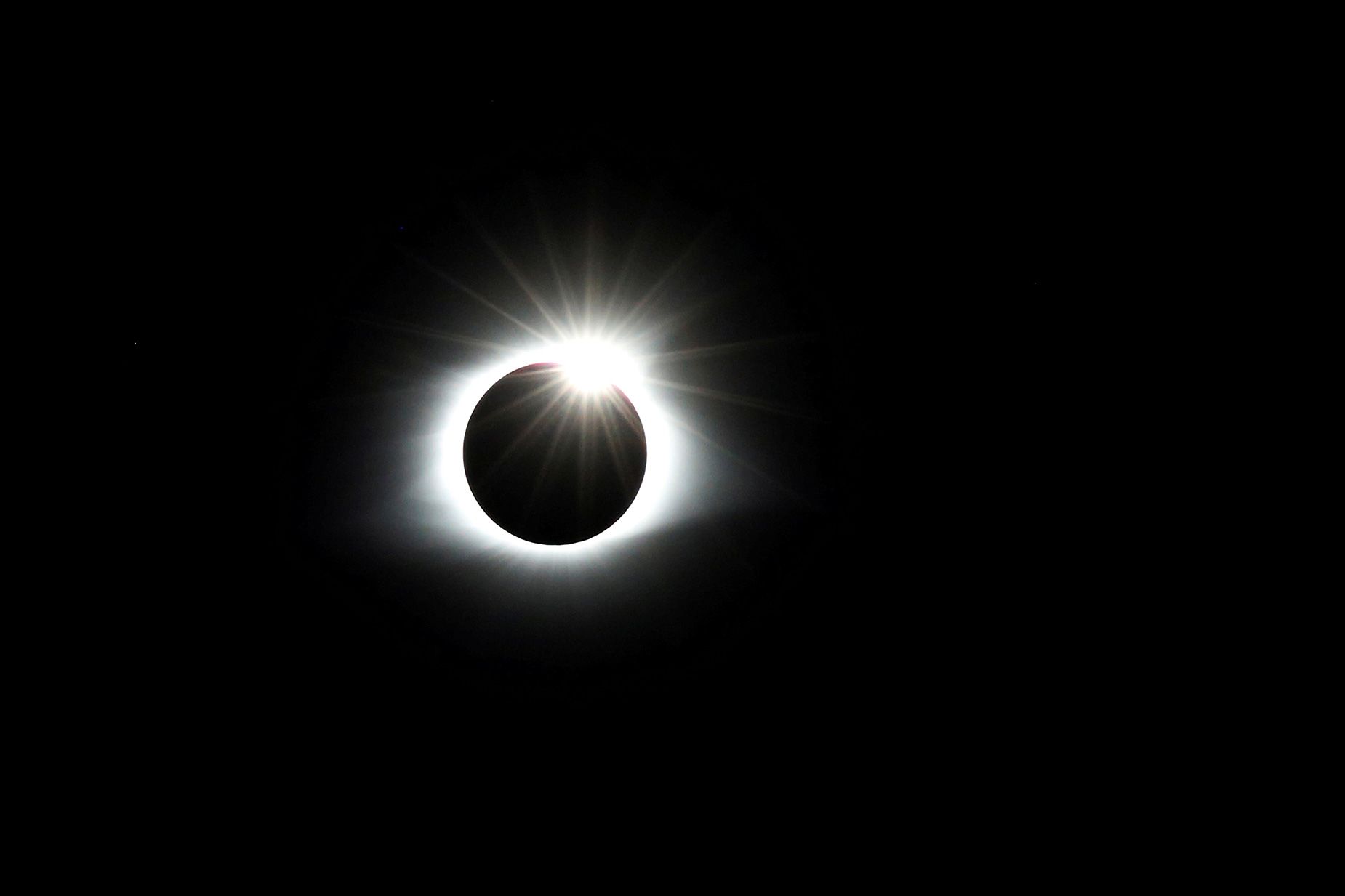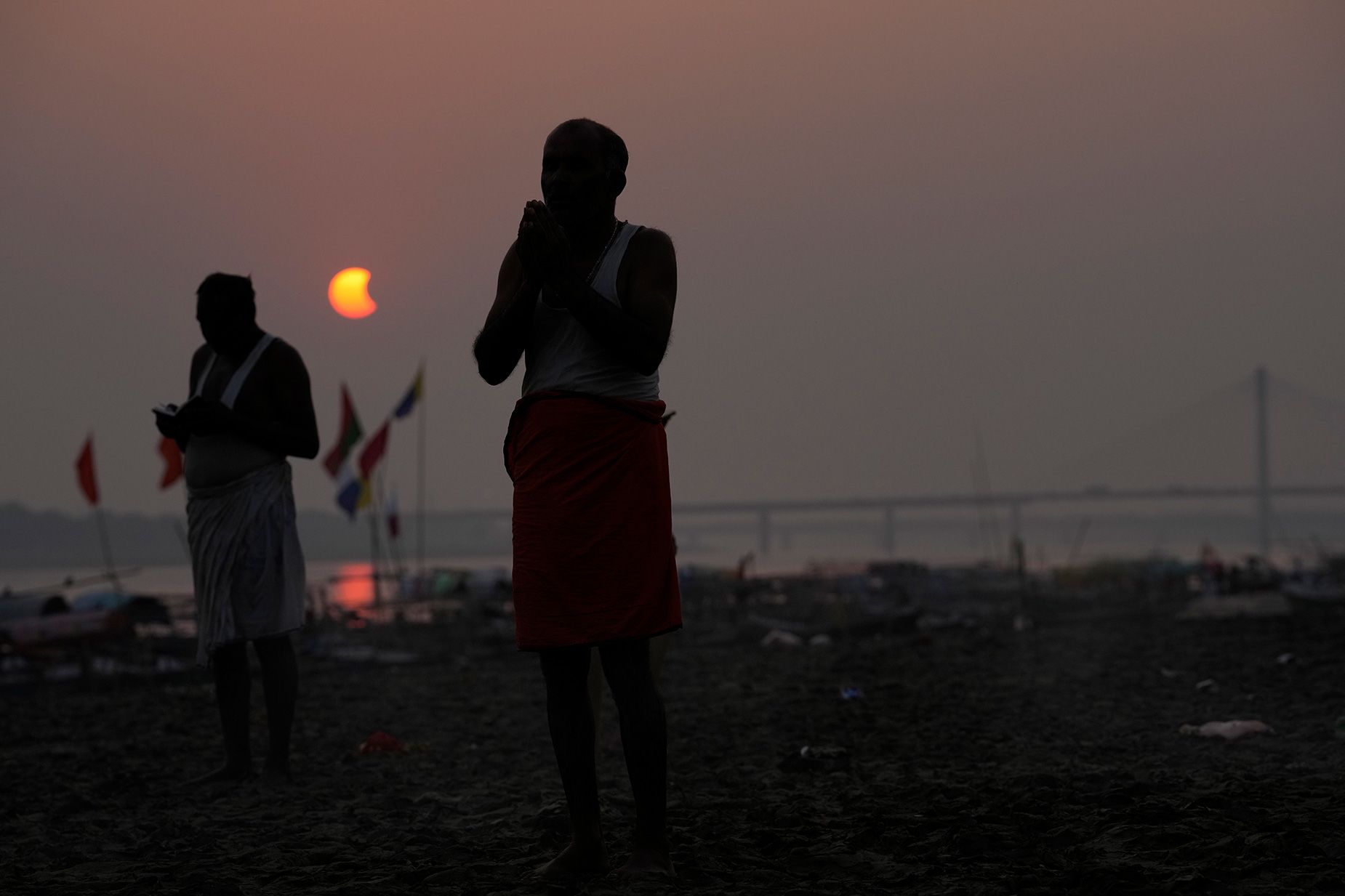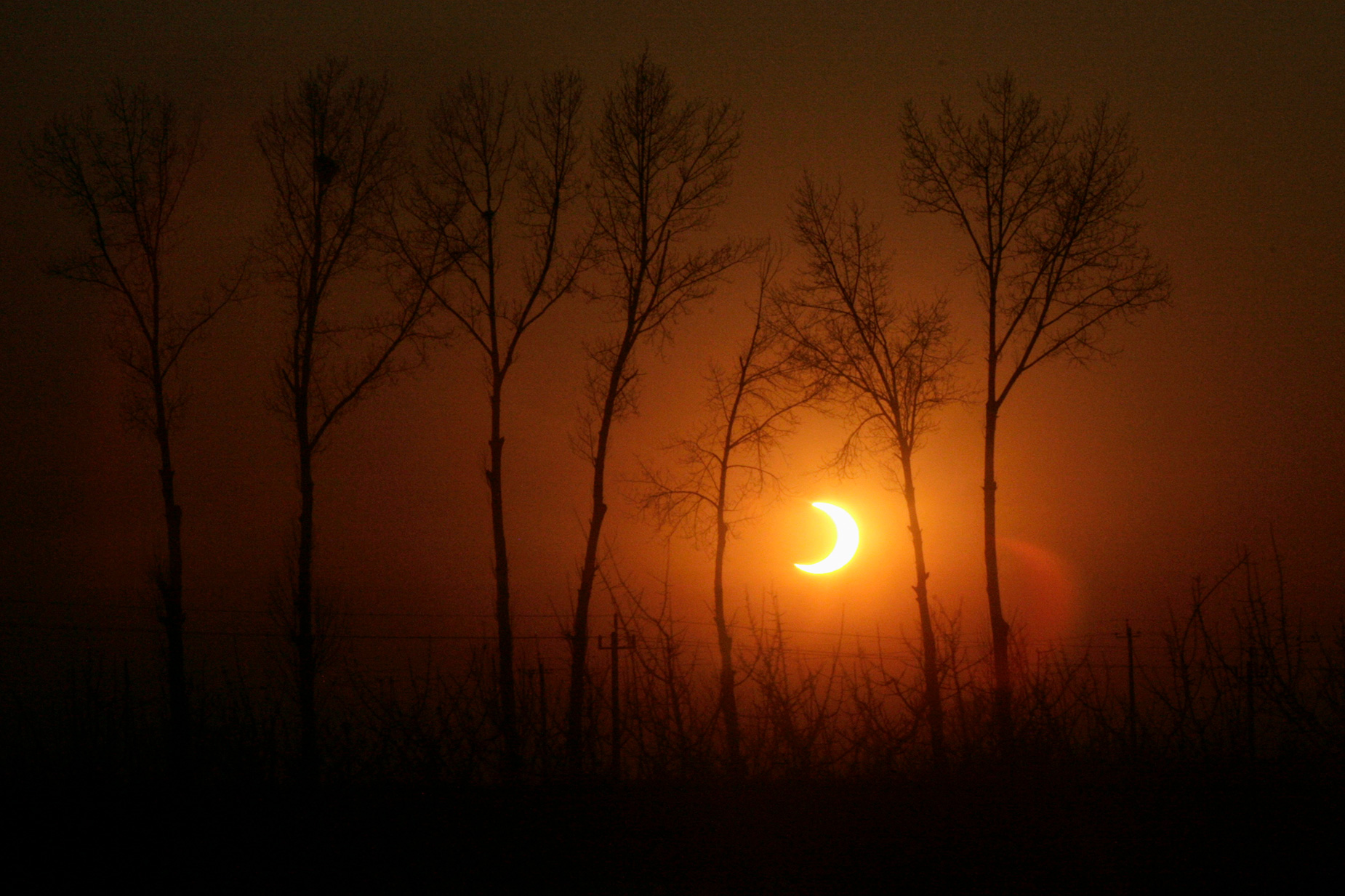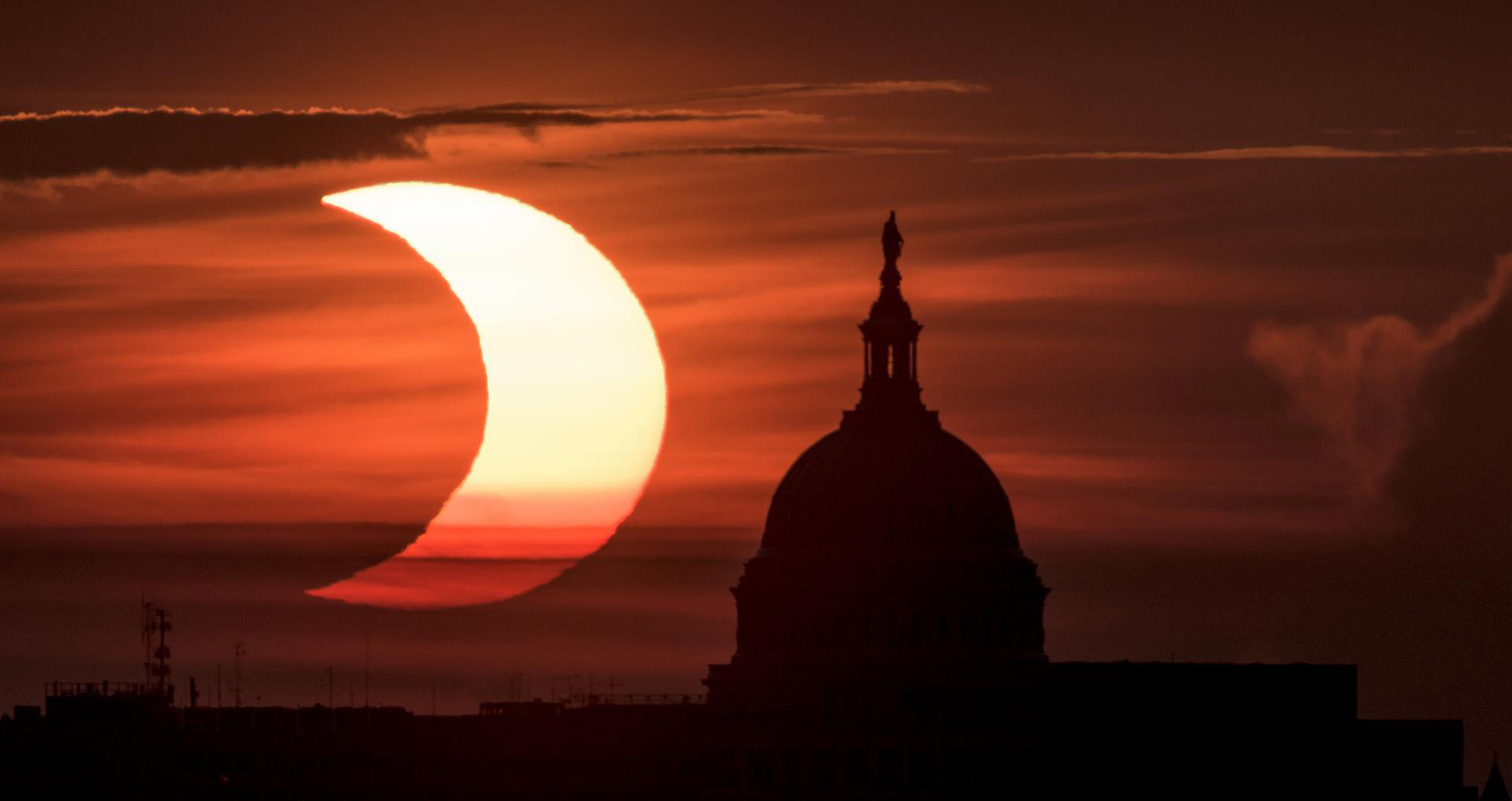America gets ready for the total solar eclipse
By Elise Hammond, Maureen Chowdhury, Antoinette Radford and Matt Meyer, CNN
Short-term rentals are booked up tonight along the eclipse's path of totality
From the CNN Visuals team
Are eclipse maps slightly off? Make sure you don't miss the show
From CNN's Jackie Wattles

New map calculations have raised some concerns that the path of totality — where it’s possible to see the moon completely block out the sun — is slightly narrower than NASA calculated.
That means some cities on the edge of the route that were expecting to experience a second or two of total darkness might be left out.
NASA hasn't changed its predictions, but the space agency advises that there is some uncertainty involved in mapping the eclipse’s path.
“Calculations that use a slightly larger radius for the size of the Sun yield an eclipse path that is slightly narrower,” said NASA spokesperson Karen Fox in an emailed statement. “This difference would only affect cities on the very edge of the path of totality, where blanket predictions are difficult regardless — a few city blocks one way or the other could mean 20, 10, or 0 seconds of totality.”
For viewing purposes, NASA scientists and other experts recommend that spectators head for the middle, rather than the perimeter, of the path anyway.
“I would never, never be near the edge of where that totality is because it’s a difference between night and day,” said Dr. Edward Guinan, a professor of astronomy and astrophysics at Villanova University.
Follow one man's 52-year quest to see an eclipse
From CNN's Chris Isidore

CNN Business writer Chris Isidore has been hoping to see an eclipse for the past 52 years, starting with an 1,800-mile round trip to northern Quebec when he was 11 years old. But that eclipse was clouded out at the last moment.
His most recent eclipse hunt was a trip to the Midwest that included more than 500 miles of driving, ending with him and his family members huddled underneath a canopy in the rain. He got to see the land around him turn dark as night both times. But little else.
So this year when he made plans to see the eclipse, he decided to build his plans around two words: mobility and flexibility. When someone asked recently where he was going to see the eclipse, he responded, “Somewhere along a 1,400-mile stretch of the path of totality.”
That range of options stretches from Pocahontas, Arkansas, in the northern part of that state, to Hartland, New Brunswick, in Canada, just over the border from Maine.
But just a day before the big event, he's still not entirely sure what his plans will entail — and whether they will be enough.
While many flock to see the eclipse, these cultures are doing something different
From CNN's Harmeet Kaur

In some cultures and faith traditions, an eclipse is less spectacle and more spiritual. Here’s how some religions and cultures observe the celestial event:
Some Hindus see it as a bad omen: In Vedic astrology, an eclipse occurs when the shadow planet Rahu swallows the sun.
Some Hindus fast before and bathe after the celestial event to clear themselves of negative energies. Certain temples, meanwhile, close down during the eclipse and offer special prayers.
Muslims consider eclipses a sign from God: Per Islamic tradition, the Prophet Muhammad’s young son Ibrahim died on the day of a solar eclipse.
Many of his followers at the time associated the celestial phenomenon with death and sorrow, says Akif Aydin, president of the interfaith organization Atlantic Institute SC. But the Prophet was quick to dispute such notions, declaring that an eclipse was merely a sign from God — not a harbinger of life or death.
“It is a time to connect with God again — to remember God’s creation again,” Aydin said.
For Navajos, it’s a time of reverence: Eclipses are a more solemn occasion in Navajo tradition, according to Evelyn Bahe, a program manager in the Department of Diné Education in Window Rock, Arizona.
The Diné, the term Navajos use to refer to themselves, see the celestial event as a time to show reverence for the sun and Earth.
“During the eclipse, we have to get back into our dwelling, close the curtains and make it really quiet,” Bahe says. “During this time, we cannot eat. We cannot sleep. We cannot drink water.”
Severe storms may pose a threat to solar eclipse viewers
From CNN's Caitlin Kaiser, Elisa Raffa and Allison Chinchar
Excited eclipse watchers, watch out: Weather could complicate attempts to see the epic astronomical phenomenon in parts of the Southwest.
Clouds and storms could hinder the ability to see the eclipse in its full glory in several spots along the path of totality — where the moon will completely block out the sun.
The most ideal weather for the eclipse will likely occur in two general areas: from Vermont through Maine, as well as Missouri through southern Indiana. Only a few isolated clouds are expected for these areas, which should not prevent optimal eclipse viewing.
So get your eclipse glasses ready for places like Evansville, Ind.; Carbondale, Ill.; Burlington, Vt.; and Caribou, Maine.
Some of the locations with less-than-ideal weather include portions of the eastern Great Lakes and much of Texas.
Cleveland, Ohio, and Erie, Penn., have a chance of rain mainly in the morning, but scattered cloud cover may be slow to exit the area even after the rain ends.
Farther east in Buffalo and Rochester, New York, cloud cover is expected to be between mostly cloudy and overcast — which will limit the viewing of the eclipse pretty significantly.
Then there are the southern cities, which not only have clouds to worry about, but also severe storms: There is a Level 2 of 5 risk for severe weather on Monday, potentially impacting much of Texas as well as parts of Oklahoma, Arkansas and Louisiana.
The risk for severe weather overlaps with portions of the path of totality, including over Dallas.
The National Weather Service in Dallas is forecasting mostly cloudy skies during the eclipse, with scattered storms starting in the early evening. The severe weather is expected to move into the region after the eclipse, but could be hazardous to those traveling through the area.
Ancient records of eclipses date back to 772 BC
From CNN's Ashley Strickland and Terry Ward

Eclipses have long inspired terror and awe as ancient cultures sought ways to explain the celestial phenomenon.
“I find the mythology and folklore of eclipses fascinating,” said Mark Littman, a journalism professor at the University of Tennessee in Knoxville and coauthor of “Totality: The Great North American Eclipse of 2024.”
“To see how people long ago and people today reacted to a total eclipse of the Sun, a sight so unexpected, so dramatic, so surprising in appearance, and so unnatural even though it is utterly natural.”
Ancient records of eclipses date back to 772 BC, when the Chinese marked them on animal bones, and 750 BC, when Babylonians recorded eclipses in their cuneiform writing on clay tablets, Littmann said. Both cultures "realized there was a rhythm to eclipses," which meant they could be calculated and predicted in the future.
Despite the ability to predict eclipses, the cause of the eclipse remained unknown, so myths and folklore filled the knowledge gap.
"The mythology of eclipses most often involves a beast that tries to eat the sun for lunch. For the Chinese, that beast was a dragon or a dog. For Scandinavians, it was a wolf," Littmann said.
Those in northern South America thought the sun and moon fought one another, trying to shut off each other's light, he said.
Transylvanian folklore suggested that the sun looked down on Earth, saw the corruption of humans, and turned away in disgust.
And the Fon people of western Africa thought the male sun ruled the day, while the female moon ruled the night.
"They love each other, but they are so busy traversing the sky and providing light that they seldom get together," Littmann said. "Yet when they do, they modestly turn off the light."
Follow this step-by-step guide to make your own eclipse viewer
If you plan to be one of the millions of Americans gazing up at the sky during the total solar eclipse on April 8, don't forget to protect your eyes.
If you can't get your hands on a pair of eclipse glasses, don't worry: You can make your own eclipse viewer with a few items you already have in your house.
Watch the step-by-step guide here:
Animals from giraffes to crickets may act oddly during tomorrow's eclipse
From CNN's Taylor Nicioli

During the Great American Eclipse of 2017, zoo animals acting strangely took researchers by surprise — the giraffes gathered and broke into a gallop, the Galápagos tortoises began to mate, and the gorillas started to get ready for bed.
These odd behaviors were just a few of several anomalies that scientists stationed at the Riverbanks Zoo and Garden in Columbia, South Carolina, observed during the historic solar event spanning the United States, according to a March 2020 report.
Reports of animals acting strangely during a solar eclipse date back hundreds of years, according to NASA, but the causes and effects of the unusual behaviors are not fully understood. The most consolidated study is from nearly 100 years ago, when a team of scientists led by entomologist William M. Wheeler collected almost 500 observations from the public.
Here's some behaviors documented over the years:
- Crickets chirping as if it were nighttime
- Bees attempting to return to their hives
- Captive baboons increased grooming behaviors
- Brown pelicans began to roost
- Colonial orb-weaver spiders took down their webs
- Certain amphibians became more vocal
How to tell the difference between the 4 types of solar eclipses
From CNN's Elise Hammond

Millions of people across Mexico, the United States and Canada will be able to see a solar eclipse on Monday — not to be confused with a lunar eclipse.
The difference is all about how the sun, the moon and Earth line up.
A solar eclipse happens when the moon is directly in front of the sun. In a total solar eclipse, like the one we'll see tomorrow, the moon completely blocks out the sun, causing everything to go dark for a few minutes.
In addition to total solar eclipses, there are three other types:
- Annular: When the moon is near its furthest distance from Earth, it won’t cover the entire sun. This creates what looks like a ring around the moon, NASA says
- Partial: As the name suggests, this is when the moon only blocks part of the sun, creating a crescent shape. On Monday, only people in the path of totality will see a total solar eclipse, but most people in the US will still get to see a partial solar eclipse.
- Hybrid: Due to the curve in Earth’s surface, an eclipse can shift between annular and total, according to the space agency.
A lunar eclipse is the other way around: the Earth blocks the sun’s light from hitting the moon. This sometimes makes the moon look red because Earth’s atmosphere absorbs the other colors, according to NASA.
Eclipses are rare events because the moon does not orbit on the same plane as the Earth and the sun, NASA says, it is tilted at about 5 degrees. It’s the reason why there isn’t a lunar eclipse every month — sometimes even when the moon is behind Earth, it can still get hit with some sunlight.



